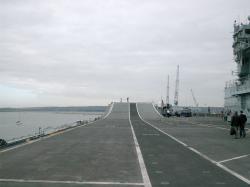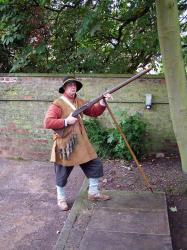Translate this Page
Flers-Courcelette 1, Somme day 77
Engagement/Skirmish Name : Flers-Courcelette 1, Somme day 77
Date(s) : 15 September 1916
Part of : First World War , The Western Front , The Battle of the Somme ,
Outcome : A victory for British & Allied Forces over German Forces
Type of battle : Land
Summary
About the biggest allied push since Somme day 1. The whole of the Fourth Army [XIV, XV, & III Corps] plus the Canadian Corps from the Reserve Army were involved. This was the first occasion tanks were brought into battle and were mis-used by Haig against the advice of the innovator/developer of the tank idea Lt-Col E.D. Swinton. Gains of 2000 to 3000 yards, including Flers, Martinpuich and Courcelette, were made by British, New Zealand and Canadian troops. In spite of heavy losses and fierce counter-attacks the gains were held.
More details
XIV Corps. The right wing of the Fourth Army with right flank before Combles.
56th Division: Elements of 169 Brigade ably supported by a single tank were succesful in taking Combles Trench and part of Loop trench. They were unsuccessful in gaining their objective, the sunken road. 167 Brigade had two tanks assigned to assist but one lost a track early in the fight. The brigade initially made good gains as far as Bouleaux Wood but were forced back to Middle Copse.
6th Division: The Division's primary objective was the Quadrilateral. Of the three tanks allotted to this Division only one reached the start line. It began to advance, opened fire on its own troops [9th Norfolks] move someway towards the enemy before returning short of fuel. Repeated infantry attacks from 0620 hrs until 0950 hrs were held by uncut wire and thrown back by machine-gun fire. High losses were sustained for no gain.
Guards Division: Primary objectives were the Triangle and the SerpentineOf the ten tanks allotted to this Division only five made it to the start line. Of these one broke down immediately, two started late and lost direction, the fourth ditched and the fifth returned low on petrol. The infantry fought until midday, from their 0620hrs start, to take the Triangle. The second objective was also achieved and by 1730hrs reinforcements had come up to hold the positions gained.
XV Corps. To the left of XIV Corps centred on Delville Wood.
14th Division. Three tanks were designated for an attack before zero hour on a pocket of German troops. At 0515hrs only one tank was operational that was immobilized about 0530 by a shell. The infantry, although under machine-gun fire, succeeded in clearing the pocket with 'bomb and bayonet'. At zero hour, 0620hrs, only one of the three tanks assigned to the attack went forward and gave valuable support before being knocked out. 41 Brigade gained its objective, Switch Line, at 0700hrs. Rear battalions moved through and gained the second objective, Gap Trench. At zero hour 42 Brigade had a 3,000 yard advance to make before passing over Gap Trench at 0900hrs. They were stopped by machine-gun fire just short of their objective. By improving and connecting a line of shell holes they were able to form a defensive line which they linked up with the Guards Brigade. At dusk [1845hrs] heavy German counter-attacks were repulsed.
41st Division. Seven tanks were assigned to support this division. At 0620hrs the infantry advanced following a creeping barrage. They took Tea Support Trench, Switch Line and Flers Trench with little resistance but were held before Gird Trench. Three tanks were ditched by the time Flers Trench was reached. With the effective help of four tanks Flers was stormed at 0820hrs and was cleared of the German defenders by 1000hrs.
New Zealand Division. After an early setback when they were caught by the supporting creeping barrage the Kiwis made good progress to Flers Trench. They were held up until the two tanks caught up and were able to flatten the wire. They reached their final objective, Grove Alley, at 1130hrs but were forced back at 1430hrs by counter-attacks. They held a position north of Flers which linked with 41st Divs position.
lll Corps. Left wing of the Fourth Army its left flank opposite Martinpuich.
47th Division. High Wood, one of the strongest positions in the German line, was the key objective although taking it would only mean an advance of 500yds. Although four tanks were assigned in support the ground was totally unsuitable for their deployment. The infantry assault was stopped by machine-gun fire. Repeated attempts to advance resulted in heavy casualties. A massive bombardment of Stokes mortar rounds [750 in fifteen minutes] broke the German resistance and by 1300hrs the British had occupied all of the wood.
50th Division. Initial advance of its right flank was held up by enfilading fire from High Wood. Units were reassigned to fight towards the wood in support of 47th Division.






